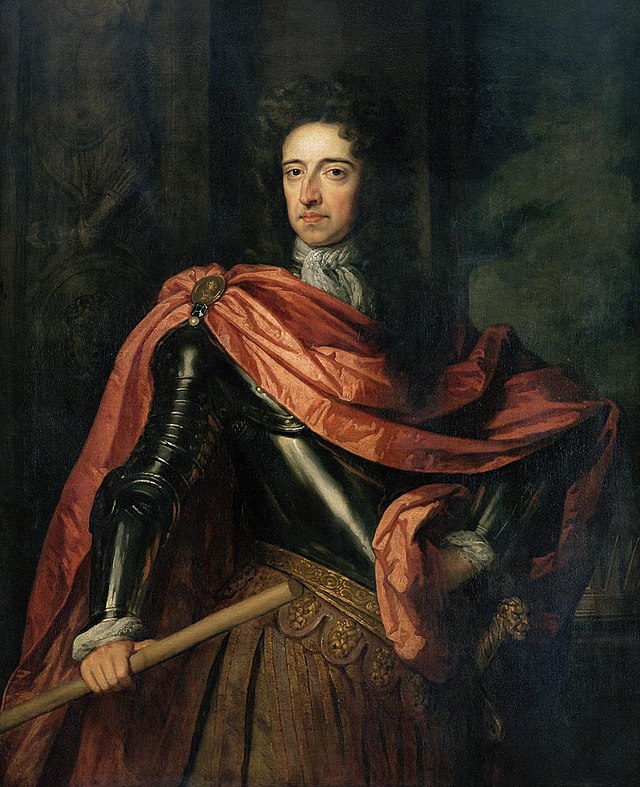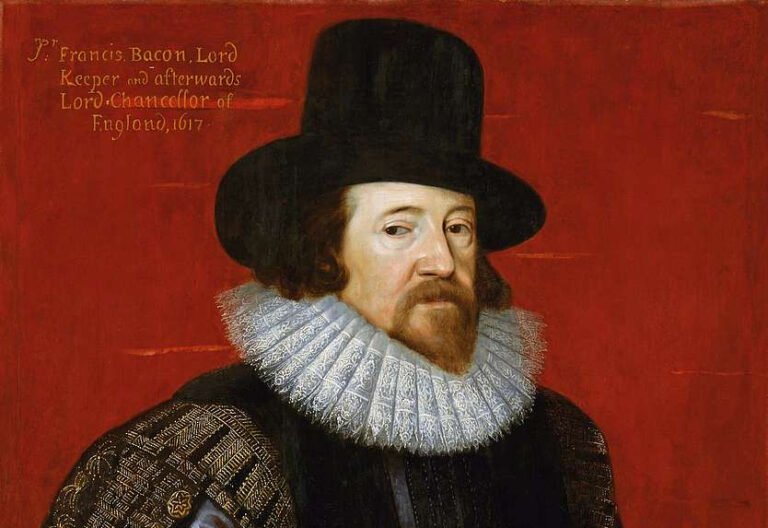William III, also known as William of Orange, was a significant historical figure. His reign had a profound impact on the English monarchy and European politics.
Born in 1650, William III became King of England, Scotland, and Ireland in 1689. He ruled alongside his wife, Mary II, in what is known as the “Glorious Revolution. ” This period marked a shift towards constitutional monarchy, reducing the powers of the monarchy and enhancing parliamentary authority.
William’s leadership was crucial in the fight against the expansion of French power in Europe. His military and political skills shaped the future of the British Isles and influenced the balance of power in Europe. Understanding William III’s life and reign offers valuable insights into the evolution of modern governance and international relations.

Credit: en.wikipedia.org
Early Life And Rise To Power
William III, also known as William of Orange, played a significant role in European history. His early life and rise to power shaped the political landscape of his time. This section delves into his background, birth, and his military and political career.
Background And Birth
William III was born on November 4, 1650, in The Hague, Netherlands. He belonged to the House of Orange-Nassau. His father, William II, died shortly before his birth. His mother, Mary, was the daughter of King Charles I of England. This royal lineage played a crucial role in his future endeavors.
Military And Political Career
William’s military career began at a young age. He showed exceptional leadership and strategic skills. In 1672, he became the Stadtholder of Holland, Zeeland, Utrecht, Gelderland, and Overijssel. He successfully defended the Dutch Republic against France and its allies. His military prowess earned him respect and recognition.
In 1688, he accepted an invitation to become the King of England, Scotland, and Ireland. This event, known as the Glorious Revolution, marked a significant shift in power. William III ruled alongside his wife, Mary II, establishing a constitutional monarchy. His reign brought stability and reforms that shaped the future of the British Isles.
The Glorious Revolution
The Glorious Revolution, also known as the Revolution of 1688, was a pivotal event in British history. It led to the overthrow of King James II and the ascension of William III and Mary II to the English throne. This revolution was notable for its relatively peaceful transition of power and its significant impact on the constitutional monarchy in England.
Causes And Context
The Glorious Revolution had multiple causes, deeply rooted in the political and religious tensions of the time. King James II was a Catholic monarch in a predominantly Protestant England. His attempts to promote Catholicism and his autocratic rule created widespread unrest.
Many Protestant nobles and members of Parliament feared a return to Catholic dominance. They also worried about James’s relationship with France, a Catholic powerhouse. These fears spurred a desire for a change in leadership.
Another significant cause was the birth of James’s son, which threatened a Catholic dynasty. This event galvanized opposition against the king, who previously had no male heir.
Key Events And Figures
The Glorious Revolution unfolded through a series of critical events and involved several key figures. In June 1688, seven prominent English nobles invited William of Orange, a Protestant and James’s son-in-law, to invade England.
William accepted the invitation and landed at Torbay in November 1688. His arrival led to widespread desertions from James’s army. Mary II, James’s Protestant daughter, also played a crucial role. Her support for William bolstered his legitimacy.
James II attempted to rally his forces but faced overwhelming opposition. In December 1688, he fled to France, effectively abdicating the throne. The Parliament then declared that James had abdicated and offered the crown to William and Mary as joint sovereigns.
The Glorious Revolution concluded with the acceptance of the Bill of Rights in 1689. This document limited the powers of the monarchy and established key civil liberties, shaping the future of British governance.
William III’s Reign
William III, also known as William of Orange, played a significant role in English history. He ruled England, Scotland, and Ireland from 1689 until his death in 1702. During his reign, he implemented important policies and reforms. These changes had a lasting impact on the country’s political landscape.
Co-rule With Mary II
William III ruled jointly with his wife, Mary II. This co-rule started in 1689 after the Glorious Revolution. The English Parliament invited them to take the throne. They agreed to share power equally. Their partnership was unique and set a precedent for future joint monarchs.
Mary II was the daughter of James II, the previous king. She was a Protestant, and her marriage to William, also a Protestant, strengthened their claim. Together, they worked to protect Protestantism in England. They also focused on reducing the power of the Catholic Church.
Major Policies And Reforms
During their reign, William and Mary introduced several key policies and reforms:
- Bill of Rights 1689: This document limited the powers of the monarchy. It also outlined the rights of Parliament and citizens.
- Toleration Act 1689: This act granted religious freedom to non-Anglican Protestants. It allowed them to worship without fear of persecution.
- Mutiny Act 1689: This law aimed to prevent military coups. It required parliamentary approval for maintaining a standing army.
- Bank of England: Established in 1694, it helped stabilize the economy. It also provided a reliable source of loans for the government.
William III’s reign also saw significant military campaigns. He led England during the Nine Years’ War against France. This conflict aimed to curb the expansionist policies of Louis XIV. William’s leadership in the war helped to maintain a balance of power in Europe.
Overall, William III’s reign was marked by significant political and social changes. His policies and reforms laid the foundation for a modern constitutional monarchy. They also contributed to the development of a more democratic society.

Credit: www.britannica.com
William III’s Foreign Policy
William III’s foreign policy played a crucial role in shaping the political landscape of Europe. His strategic decisions and alliances significantly influenced the balance of power. Let’s delve into the key aspects of his foreign policy.
Wars And Alliances
William III engaged in several significant wars. His primary aim was to curtail the expansion of France under Louis XIV. He formed the Grand Alliance in 1689. This coalition included England, the Dutch Republic, and the Holy Roman Empire. They united against the French threat. The Nine Years’ War was a result of this alliance. It lasted from 1688 to 1697. This war drained resources but achieved its goal. It checked French ambitions and maintained European balance.
Impact On Europe
William III’s foreign policy had a lasting impact on Europe. His alliances prevented French dominance. They maintained the balance of power. This stability allowed smaller states to thrive. It fostered economic growth and political stability. William’s efforts also laid the groundwork for future coalitions. His policies influenced European diplomacy for years to come.
Religious Policies
William III’s religious policies played a significant role during his reign. His stance on religion shaped the political landscape of his time. He navigated the complex relationships between different religious groups in England and across Europe.
Protestant Ascendancy
William III strongly supported the Protestant cause. He believed in the importance of Protestantism for the stability of the kingdom. His policies aimed to strengthen the position of Protestants in England. He worked to ensure that Protestants held key positions of power. This helped to maintain Protestant dominance in both politics and society.
Relations With The Catholic Church
William III had a cautious approach towards the Catholic Church. He did not favor Catholics holding influential positions. He implemented laws to limit Catholic influence in government. The Test Acts were a key part of this strategy. These laws required public officials to take oaths against Catholic doctrines. This ensured the exclusion of Catholics from important roles. William’s policies reflected his desire to protect Protestant interests. His careful handling of religious tensions helped to maintain peace and order.

Credit: www.britannica.com
Economic Impact
William III’s reign brought significant economic changes. His policies shaped trade, commerce, and financial structures. These changes had a lasting influence on the economy.
Trade And Commerce
William III encouraged international trade. He understood its importance for economic growth. During his reign, trade routes expanded and new markets opened. This boosted the economy and increased wealth.
The East India Company flourished under his rule. It became a major player in global trade. William III’s support strengthened commercial ties with many countries. This laid the foundation for future economic expansion.
Financial Reforms
William III introduced several financial reforms. These reforms stabilized the economy and promoted growth. One notable reform was the establishment of the Bank of England in 1694. This institution played a crucial role in managing public funds.
He also reformed the taxation system. William III’s policies ensured more efficient tax collection. This increased government revenue and funded public projects. His financial reforms created a more stable economy.
Legacy Of The Glorious Revolution
The Glorious Revolution of 1688 changed England forever. William III, along with Mary II, took the throne. Their rule brought significant changes. These changes shaped the future of the British monarchy. The revolution ensured the end of absolute monarchy.
Constitutional Changes
One major result of the Glorious Revolution was the Bill of Rights. This document limited the powers of the king. It gave more power to Parliament. William III agreed to these terms. This agreement marked a shift in power.
Parliament gained the right to make laws. The king could no longer rule without its consent. This established a constitutional monarchy. The Bill of Rights also protected individual freedoms. It ensured fair trials and banned cruel punishments.
Influence On Future Monarchies
William III’s reign set a precedent. Future monarchs had to respect the limits of their power. They could not ignore Parliament. This balance of power continued to evolve. It influenced not only Britain but also other countries.
Many nations looked to Britain as a model. They adopted similar systems of government. These changes promoted democracy and individual rights. The Glorious Revolution showed that power could be shared. It proved that a king’s authority was not absolute.
William III’s Death And Succession
William III, also known as William of Orange, played a pivotal role in British history. His death and the subsequent succession marked a significant era. Let’s delve into the final years of his life and the impact on the monarchy.
Final Years
In his final years, William III faced numerous challenges. He suffered from asthma, which weakened his health. Despite his ailments, he continued to lead with determination.
William’s resolve never wavered. He was dedicated to his role as king. His health issues, though severe, did not deter his spirit. He remained active in politics and military affairs.
In 1702, William’s health took a turn for the worse. He fell from his horse, which led to a broken collarbone. This injury worsened his condition. On March 8, 1702, William III passed away at Kensington Palace.
Impact On The Monarchy
William III’s death had a profound impact on the British monarchy. He left no direct heirs, which led to a succession crisis. His sister-in-law, Anne, ascended the throne.
Anne’s succession marked the end of the House of Orange in England. It also signaled the beginning of the House of Stuart’s final chapter. The Act of Settlement 1701 ensured a Protestant succession, shaping future monarchies.
William III’s reign influenced the balance of power. It strengthened the role of Parliament. His efforts laid the groundwork for a constitutional monarchy. This shift changed the course of British history forever.
FAQs
Who Was William III?
William III was the King of England, Scotland, and Ireland. He ruled from 1689 to 1702. He was also known as William of Orange.
What Is William III Known For?
William III is known for his role in the Glorious Revolution. He overthrew King James II and established a constitutional monarchy.
When Did William III Become King?
William III became king in 1689. He ruled jointly with his wife, Mary II. They were invited by Parliament to take the throne.
Why Was William III’s Reign Important?
William III’s reign was important for establishing a constitutional monarchy. His rule marked the end of absolute monarchy in England.
Conclusion
William III’s reign left a lasting impact on history. He brought significant changes to England. His leadership strengthened the monarchy and Parliament. People admired his dedication and bravery. William’s victories in battles earned him respect. He played a crucial role in shaping modern governance.
His legacy continues to influence us today. Understanding his life helps us appreciate our past. William III’s story is a testament to the power of determination and vision. His contributions remain important, reminding us of the value of strong leadership.








